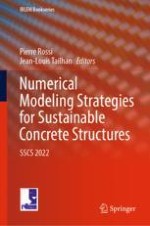2023 | OriginalPaper | Buchkapitel
The Influence of Autogenous Shrinkage and Creep on the Risk of Early Age Cracking
verfasst von : Erik Schlangen, Minfei Liang, Branko Savija
Erschienen in: Numerical Modeling Strategies for Sustainable Concrete Structures
Aktivieren Sie unsere intelligente Suche, um passende Fachinhalte oder Patente zu finden.
Wählen Sie Textabschnitte aus um mit Künstlicher Intelligenz passenden Patente zu finden. powered by
Markieren Sie Textabschnitte, um KI-gestützt weitere passende Inhalte zu finden. powered by
